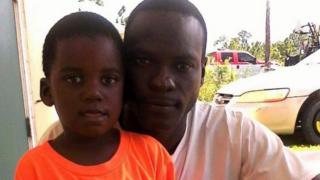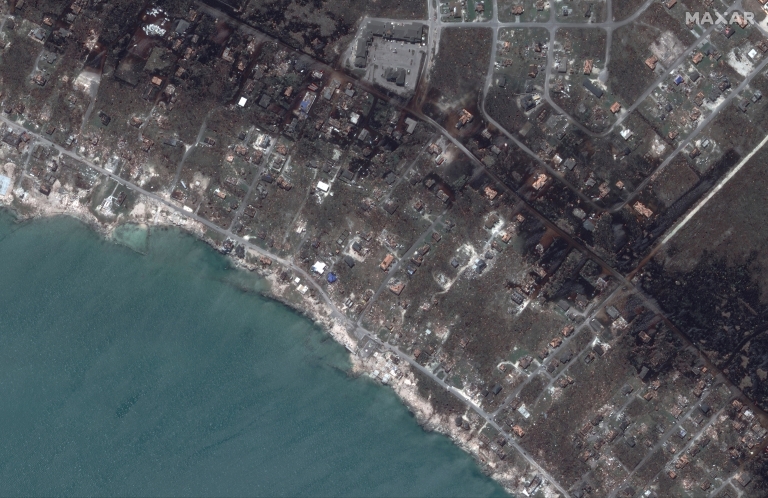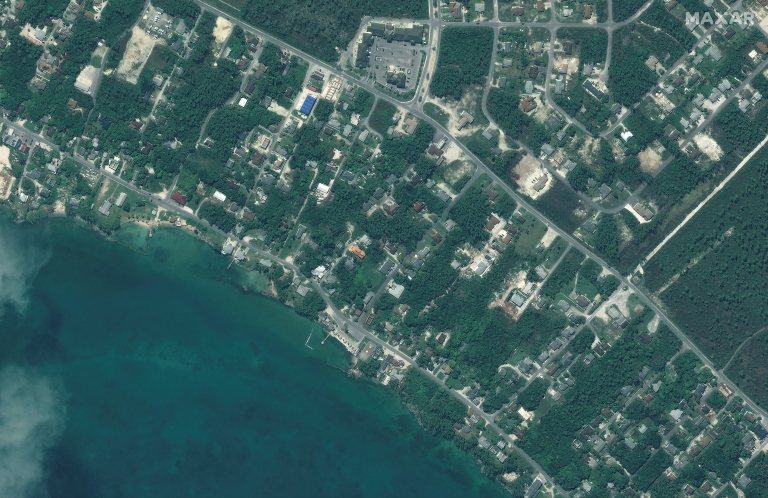Home » Latin America »
‘Hurricane’s storm surge swallowed my son’
When the water surged to the level of their house’s roof, Adrian Farrington grabbed his five-year-old son and put him there, thinking he would be safe. For almost an hour, he had been fighting the flood with a broken leg, carrying Adrian Farrington Jr, who would not stop crying.
“I keep telling him, ‘Don’t cry. Close your month,'” he told the Nassau Guardian, “‘Don’t cry. Keep breathing. Don’t cry. Close your mouth.'” But before he could sit on the roof to hold his son, known as AJ, a gust of wind blew the boy back into the water.
AJ screamed for help, “Daddy”, but it was too late. The strong surge caused by Hurricane Dorian had already swallowed him. Yet Mr Farrington, 38, tried to find his son. He swam, hoping to find a piece of clothing or a shoe. But underwater there was nothing he could see.
People who were in what was left of their neighbourhood in Murphy Town on Abacos Islands, the hardest-hit area, had already carried his wife to safety, and kept calling him. But Mr Farrington did not want to go. Not without his son.
He tried again. And again, he found nothing.
Exhausted from fighting the powerful currents, Mr Farrington, a carpenter, sought safety on higher ground. “If [my son is] rescued, I praise the Lord,” he said. “You had sharks swimming in the water – anything could happen.”
Slowly, stories of survival and of families desperately searching for their loved ones are emerging from the Bahamas, where authorities are warning that the number of deaths caused by the hurricane will be “staggering”.
Dorian devastated the northern Bahamas as a category five hurricane, with winds reaching 185mph (297 km/h), matching the highest ever recorded at landfall. It stayed over affected areas for two days.
Up until now, 30 people have been confirmed dead but this is likely to rise further as hundreds, possibly thousands, of people are still missing in the Abacos and Grand Bahama.
Mr Farrington told the newspaper he had seen “the surge push homes off the foundation”. And what the water did not destroy, the winds did. The Abacos are said to be virtually uninhabitable, with bodies piled up, no water, power or food, and militias formed to prevent looting.
Aerial images over the Abacos showed mile upon mile of destruction, with roofs torn off, scattered debris, overturned cars, shipping containers and boats, and high water levels. Officials were sending morticians and 200 body bags.
With telephone lines down in many areas, residents have posted lists of missing people on social media. On Facebook, a post by Our News Bahamas, a local news outlet, had more than 2,500 comments, mainly listing lost family members.
Interactive
Marsh Harbour, Great Abaco
September 2019
October 2018
After finding safety away from the water, Mr Farrington said he managed to reach a church where a dozen people were taking shelter. “The wall of the church was moving like when you put clothes on the line on a breezy day,” he said.
It then collapsed.
He swam from the rubble, he told the newspaper, and watched a family trapped inside a house, unable to get out, as the water was blocking the door. In less than an hour, he said, he saw some 15 people die. Many bodies are still believed to be under the ruins of collapsed buildings across the island.
Mr Farrington spent the night alone and was later rescued by residents who were probably looking for relatives. On Monday, he was flown to the capital, Nassau, and sent to the Princess Margaret Hospital where he was being treated for injuries on his right hand and two fractured bones in his right leg.
AJ’s older brother, Richard Johnson, is trying to find him. He carried a flyer with pictures of his missing brother to the National Emergency Management Agency. “There’s a possibility he might be in a shelter,” he told CBS News.
As for Adrian Farrington, the only thing he wants is to hear AJ is alive. He told CBS: “I would want him to understand is that I love him and I tried everything possible… to save him.”
Source: Read Full Article






